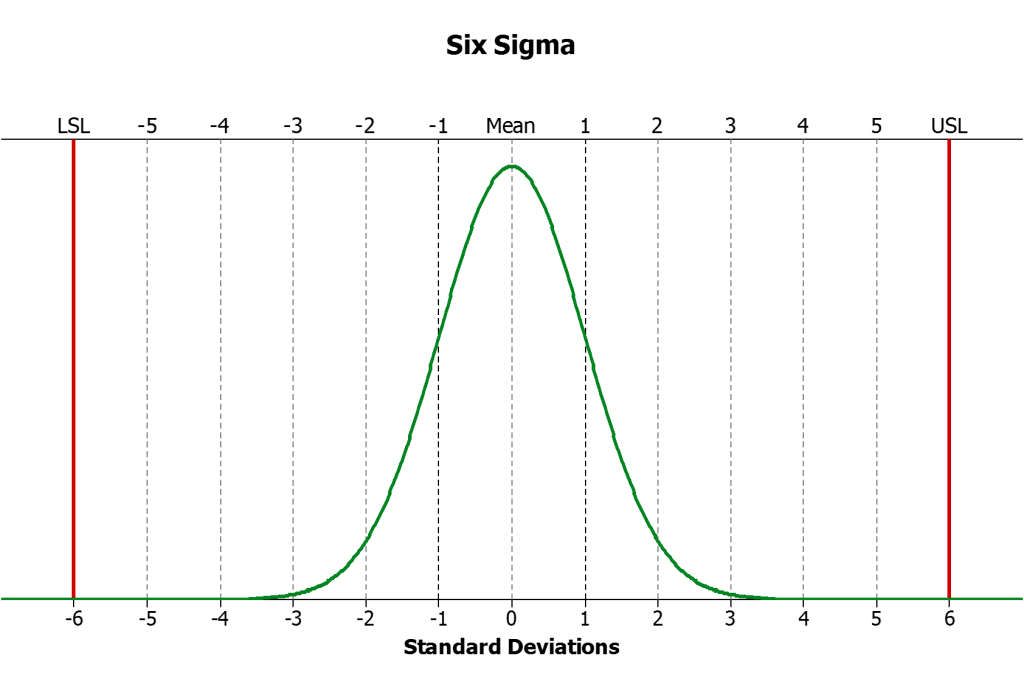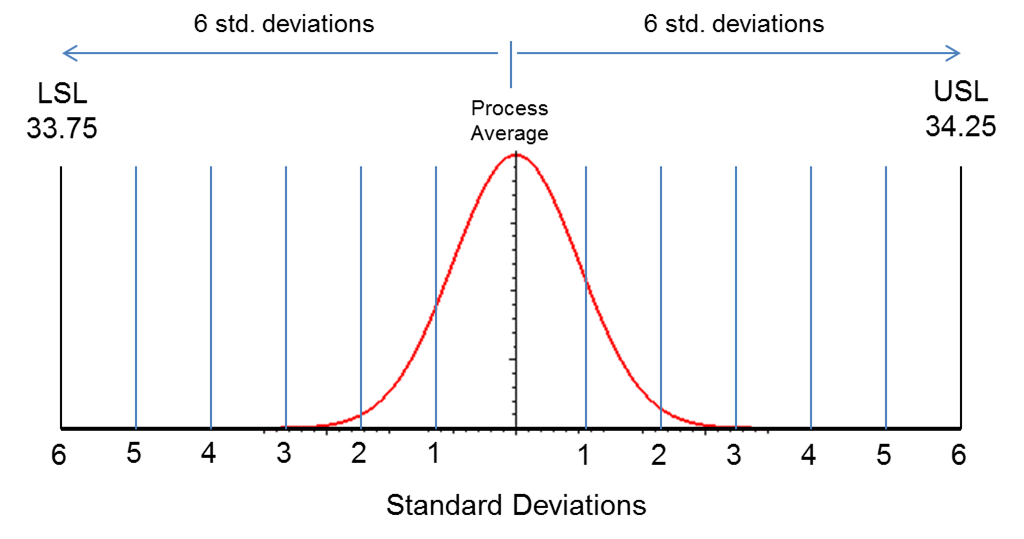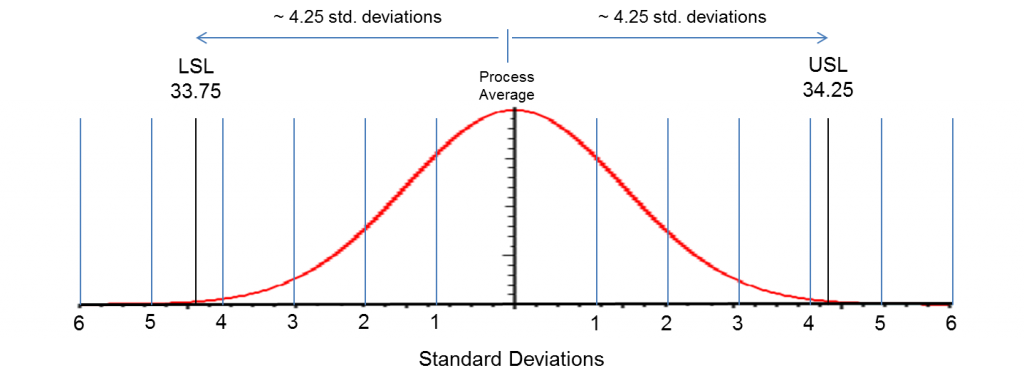What is Six Sigma?
What is Six Sigma or Lean Six Sigma
 What is Six Sigma or what is today known as "Lean Six Sigma"? It is a data-driven methodology and process improvement approach that combines Lean and Six Sigma elements. It aims to improve organizational processes' efficiency, quality, and effectiveness. Here's a breakdown of the two components:
What is Six Sigma or what is today known as "Lean Six Sigma"? It is a data-driven methodology and process improvement approach that combines Lean and Six Sigma elements. It aims to improve organizational processes' efficiency, quality, and effectiveness. Here's a breakdown of the two components:
Lean
Lean principles (originating from manufacturing), focus on eliminating waste and improving the efficiency of processes. Lean emphasizes delivering maximum value to the customer while minimizing resources and time. Lean practices include techniques like Value Stream Mapping, Five S (5S), Kaizen, and Just-in-Time (JIT) production.
Six Sigma
Six Sigma is a methodology that aims to reduce defects and variations in processes. It relies on statistical analysis and data-driven decision-making to identify and eliminate the root causes of problems. Six Sigma uses a structured approach known as DMAIC (Define, Measure, Analyze, Improve, Control) to drive process improvements.
When Lean and Six Sigma are integrated, organizations can benefit from the strengths of both methodologies. Lean helps streamline processes and reduce waste, while Six Sigma provides the tools to identify and eliminate defects and variations. The result is improved efficiency, higher quality products or services, reduced costs, and enhanced customer satisfaction.
Lean Six Sigma practitioners are often certified at various levels, including Yellow Belt, Green Belt, Black Belt, and Master Black Belt, depending on their expertise and role within the organization. These certified professionals lead or participate in projects to optimize processes and deliver better results.
Lean Six Sigma is a powerful approach that is industry agnostic, meaning, it can be applied across industries to achieve operational excellence and drive continuous improvement.
What is Lean
In Lean Six Sigma, the term "Lean" refers to a set of principles, methods, and practices to minimize waste and maximize efficiency in processes. Lean focuses on streamlining operations and eliminating activities that do not add value to the customer. It originated from manufacturing but has since been applied to various industries, including healthcare, services, and software development.
The Key principles of Lean include:
- Value Stream Mapping: Identifying and visualizing the entire process from start to finish to understand how value is delivered and where waste exists.
- Identifying and Minimizing Waste: Recognizing different types of waste and working to reduce or eliminate them. Examples of waste (also referred to as Muda):
- Defects
- Overproduction
- Transportation
- Waiting
- Inventory
- Motion
- Overprocessing
- Continuous Improvement: Encouraging a culture of ongoing improvement and empowering employees at all levels to suggest and implement changes that enhance efficiency and quality.
- Pull Systems: Using customer demand to drive production, ensuring that items are produced only when needed, reducing overproduction and excess inventory.
- Standardized Work: Establishing clear, standardized work procedures to minimize variations and errors.
- 5S: A methodology for organizing, enhancing and improving the efficiency of the workplace. The five S's are:
- Sort
- Set in order
- Shine
- Standardize
- Sustain
- Kaizen: A Japanese term that means "continuous improvement. Kaizen refers to the philosophy and practice of making small, incremental improvements to processes, products, or systems.
Lean methodologies complement the Six Sigma approach by focusing on efficiency and waste reduction, while Six Sigma concentrates on reducing defects and process variation. Lean and Six Sigma's DMAIC methodology create a powerful framework for process improvement and optimization.
What is Six Sigma
Six Sigma is a systematic and data-driven methodology for process improvement. Originally developed in the 1980s by Bill Smith (considered the father of Six Sigma) at Motorola, Six Sigma has since been widely adopted by organizations across various industries. "Six Sigma" refers to a statistical measure of quality representing a very high level of process performance.
The key principles and components of Six Sigma include the D.M.A.I.C. methodology. DMAIC is an acronym, with each letter representing one of five phases of a Six Sigma project:
- Define: This phase involves defining the problem or opportunity for improvement, clarifying project goals, and setting objectives. It often includes creating a project charter and forming a project team.
- Measure: In this phase, data related to the process under investigation is collected and analyzed to establish baseline performance. This involves identifying key process metrics and measurement systems.
- Analyze: During this phase, data analysis techniques, such as statistical tools, are used to identify the root causes of defects or variations in the process. It aims to understand why problems occur and which factors contribute to them.
- Improve: Based on the analysis, improvements, and solutions are identified and implemented to address the root causes. The goal is to optimize the process and reduce defects or variations.
- Control: In the final phase, countermeasures are implemented to sustain the improvements achieved. This includes developing monitoring systems, setting control limits, and creating a plan for ongoing process management.
The central goal of Six Sigma is to reduce defects, errors, or variations in processes to achieve a level of performance where there are no more than 3.4 defects per million opportunities (referred to as a "Six Sigma" level of quality). Achieving this level of quality signifies a highly efficient and consistent process.
To support Six Sigma projects and initiatives, individuals can undergo training and certification at various levels, including Yellow Belt, Green Belt, Black Belt, and Master Black Belt, depending on their expertise and role within the organization. These certified professionals lead or participate in projects to achieve process excellence and continuous improvement.
The Six Sigma Approach
The Six Sigma approach to problem-solving uses a transfer function. A transfer function is a mathematical expression of the relationship between the inputs and outputs of a system. The relational transfer function that all Six Sigma practitioners use is:
Y=f(x)
The symbol Y refers to the measure or output of a process. Y is usually your primary metric, the measure of process performance you are trying to improve. The expression f(x) means "function of x", where x’s are factors or inputs that affect the Y. Combined, the Y = f(x) statement reads, “Y is a function of x,” in simple terms, “My process performance is dependent on certain x’s.”
The objective in a Six Sigma project is to identify the critical x’s that have the most influence on the output (Y) and adjust them so that the Y improves. It is important to keep in mind this concept throughout the DMAIC process. The system (or process) outputs (Y’s) are a function of the inputs (x).
The Y = f(x) equation is a very powerful concept and requires measuring your output and quantifying your inputs. Measuring process inputs and outputs is crucial to determining the significant influences on any process.
The Six Sigma Methodology
If you haven't yet surmised, Six Sigma is a data-driven methodology for solving, improving, and optimizing business problems. Six Sigma follows a methodology conceptually rooted in the principles of a five-phase project. Each phase has a specific purpose, tools, and techniques that aid in achieving the phase objectives.
The five phases of DMAIC are:
- Define
- Measure
- Analyze
- Improve
- Control
The goals of each phase are:
- Define - To define the problem, goal, gap, COPQ, and timeline. This sets in motion what the project is intended to achieve and delineates the scope of the work.
- Measure - To establish a baseline for the process, ensure the measurement system is reliable, and identify all possible root causes for a problem.
- Analyze - To narrow down all possible causes to arrive at the root causes, the critical few that are the primary drivers of the problem.
- Improve - To develop and implement the improvements for the process.
- Control - To methods of measuring and maintaining control of your improvements, ensuring improvements are sustained over time.
The Six Sigma Belt Levels and Supporting Roles
There are various roles in a Six Sigma program. The primary roles are commonly referred to as “Belts.” In addition to Belts, other key roles have specific responsibilities. It is important to know the many roles in Six Sigma to understand who has what responsibilities in a project. Let's explore the roles and corresponding responsibilities in a Six Sigma program. Each of the four Six Sigma belts represents a different level of expertise in the field of Six Sigma:
- Six Sigma Yellow Belt
- Six Sigma Green Belt
- Six Sigma Black Belt
- Six Sigma Master Black Belt
Different Belt levels are associated with differing levels of expertise in Six Sigma. The Master Black Belt is the most highly trained expert, while Yellow Belts have fundamental knowledge. In addition to Belts, other critical and complementary roles are very important to the success of Six Sigma initiatives:
- Champions
- Sponsors
- Stakeholders
- Subject Matter Experts
Six Sigma Yellow Belt
The Six Sigma Yellow Belt (YB) understands the objectives and methods of a Six Sigma project. A Yellow Belt has a fundamental understanding of what other Six Sigma Belts (GB, BB, and MBB) are
doing to help them succeed.
In a Six Sigma project, Yellow Belts usually serve as a subject matter expert regarding some aspects of
the business, process, or project. Supervisors, managers, directors, and sometimes executives are most commonly trained at the Yellow Belt level.
Six Sigma Green Belt
The Six Sigma Green Belt (GB) is considered a less intense version of a Six Sigma Black Belt. A Green Belt is exposed to and understands all the comprehensive aspects of Six Sigma with less focus on the statistical theories and some other advanced analytical techniques, such as Design of Experiment. Regarding project management, a Green Belt can have the same responsibilities as a Black Belt. However, in general, the Green Belt works on less complicated and challenging business problems.
Six Sigma Black Belt
The Six Sigma Green Belt (GB) is considered a less intense version of a Six Sigma Black Belt. A Green Belt is exposed to and understands all the comprehensive aspects of Six Sigma with less focus on the statistical theories and some other advanced analytical techniques, such as Design of Experiment. Regarding project management, a Green Belt can have the same responsibilities as a Black Belt. However, in general, the Green Belt works on less complicated and challenging business problems.
A Black Belt typically has the following responsibilities:
- Project Management
- Defines projects, scope, teams etc.
- Marshals resources
- Establishes goals, timelines, and milestones
- Provides reports and/or updates to stakeholders and executives
- Task Management
- Establishes the team’s Lean Sigma roadmap
- Plans and implements the use of Lean Sigma tools
- Facilitates project meetings
- Performs project management of the team’s work
- Manages progress toward objectives
- Team Management
- Chooses or recommends team members
- Defines ground rules for the project team
- Coaches, mentors, and directs project team members
- Coaches other Six Sigma Belts
- Manages the team’s organizational interfaces
Six Sigma Master Black Belt
The Master Black Belt (MBB) is the most experienced, educated, and capable Six Sigma expert, often considered a trusted advisor to high-level leaders. A typical Master Black Belt has managed dozens of Black Belt-level projects and can simultaneously lead multiple Six Sigma Belt projects. MBBs ensure the proper and consistent application of Six Sigma within or across departments while mentoring and certifying Black Belts and Green Belts.
A Master Black Belt typically works with high-level operations directors, senior executives, and business managers to help assess and plan business strategies. This is why the MBB needs to have a strong ability to communicate with and influence leaders at all levels of
an organization. An MBB commonly advises management on the Cost of Poor Quality and consults on methods to improve business performance.
While a Master Black Belt is technically savvy regarding all Lean Six Sigma concepts and tools, he or she must have the skills to communicate practically with those not well-versed in Six Sigma.
Going Deeper on What is Six Sigma
Sigma is the measure, and Six is the goal.
What is Six Sigma? Let's start with just the "Sigma” part first. In statistics, "sigma" refers to standard deviation, which is a measure of variation. Throughout any Six Sigma certification course, you will learn that process variation is the enemy, and reducing it is key to any quality process. You will also come to learn that in order to do so, you will need to understand it, manage it, and minimize it with the many tools and methods you'll learn in your Six Sigma certification course. Now, about the Six part. "Six" Sigma is an aspiration or goal for process performance.
The image below shows the distribution of outputs for a process that performs at Six Sigma. You will notice that the mean of the distribution is six standard deviations away from the nearest customer specification limit.

A process like the one above, with an average that is six standard deviations away from the customer's nearest upper or lower specification limit, has abundant room to "float” before approaching either specification limit (defects occur when the process delivers a product that is not within the specifications set by the customer and defined by the USL and LSL).
As a result, a Six Sigma process only yields 3.4 defects for every million opportunities! In other words, 99.9997% of the products a Six Sigma process produces are defect-free! Let's take this concept a little further. You just learned that Sigma level measures the number of " sigma " between your process average and the nearest customer specification limit. Suppose your customer's upper & lower specifications (USL & LSL) were narrower than the width of your process spread, as depicted by the image below.

In the case above, the USL & LSL are about 4.25 standard deviations from the process average. Therefore, this process operates at 4.25 sigma. Although the distribution fits well inside the spec limits, a process performing at 4.25 sigma is good, but it will have a process yield of about 99.97% or 3000 defects per million opportunities. On the other hand, a 1-sigma process is very different. It will have a defect rate of about 70% or nearly 700,000 defects per million opportunities (Ouch!). To understand more about Six Sigma and the 1.5 sigma level shift, you can read our article "What is Sigma in Six Sigma"


